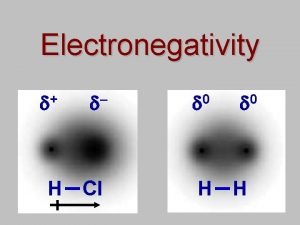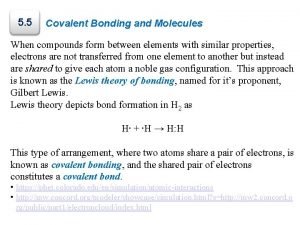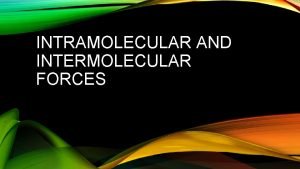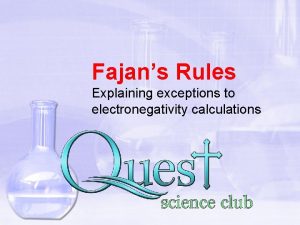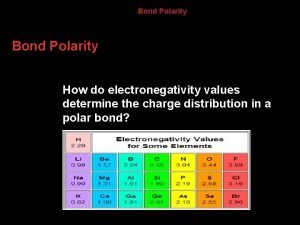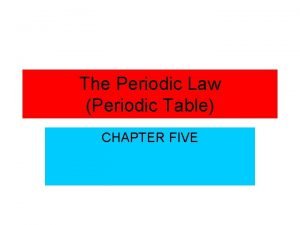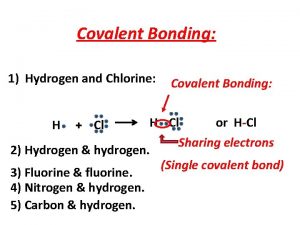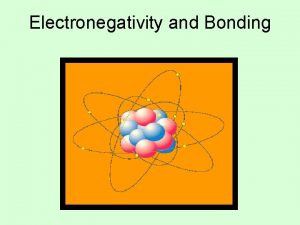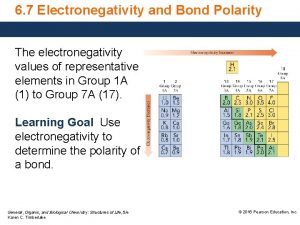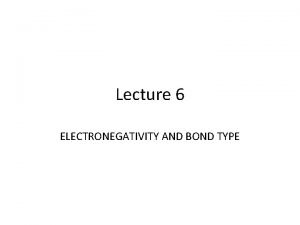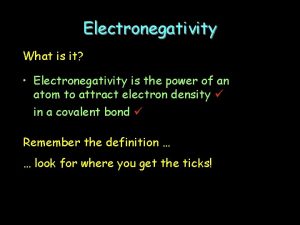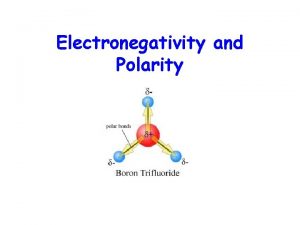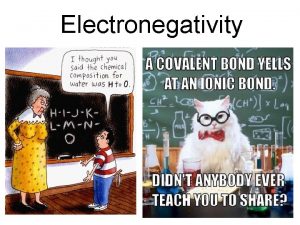Electronegativity 0 H Cl H 0 H Electronegativity








- Slides: 8

Electronegativity + – 0 H Cl H 0 H

Electronegativity • Electronegativity describes how electrons are shared in a compound • Consider the compound HCl + – H Cl • The electron clouds represent where the two electrons in the HCl bond spend their time (sizes of atoms are not being shown) • The shared electrons spend more time around Cl than H. In other words Cl is more electronegative than H.

Electronegativity table • The relative attraction for electrons is summarized in figure 7. 11 (pg. 255) • These numbers are derived from several factors including EA, IE, ENC, atomic radius • You do not need to understand where the numbers come from • You need to know that a high number means the element has a greater pull on electrons • You will also need to calculate the difference between values to estimate the % ionic or % covalent character of a bond • PE 12 (pg. 256). Reference: 7. 10.

Answers

Calculating EN differences • The first step in defining the polarity of a bond is to calculate electronegativity difference ( EN) • EN = EN large - EN small • E. g. for Na. Cl, EN = 2. 9 - 1. 0 = 1. 9 • Next, estimate from fig 7. 12 the % ionic character: about 65% (60 - 70%) Q-Give the % ionic character for Mg. O, CH, HCl Mg. O = 3. 5 - 1. 3 = 2. 2 … 80% ionic (75 -85) CH = 2. 5 - 2. 1 = 0. 4 … 7% ionic (5 - 10) HCl = 2. 9 - 2. 1 = 0. 8 … 20 % ionic (15 -25) Note if % ionic is 20%, then % covalent is 80%

Defining polarity • For our purposes we will define polarity in the following fashion: 0 -10 % is non-polar, 1050% is polar (covalent), 50%+ is ionic • This is a crude estimate. In reality, the only non-polar bond between 2 atoms occurs in diatomic molecules (O 2: EN = 3. 5 - 3. 5 = 0) Q - what is the polarity of the bonds in Mg. O, CH, HCl? Mg. O = 80% ionic = ionic CH = 7% ionic = non-polar HCl = 20 % ionic = polar covalent

Polarity in molecules • A bond that you calculate to be polar may not be polar if the molecule is symmetrical • Imagine a tug-of-war between atoms of the same strength around a central atom • The pull in one direction is the bond polarity or “bond dipole”. The overall/molecular polarity is also known as “dipole moment” • If the pull is the same from all directions then the electrons are not attracted to one atom over another and the molecule is non-polar • Read 7. 11 (bottom of 256 - 259) including the examples. Complete the worksheet.

Polarity in molecules: Examles NH 3 NH 4+ Br. Cl Lewis Structure DEN of bonds Bond polarity Symmetrical molecule? Polarity For more lessons, visit www. chalkbored. com
